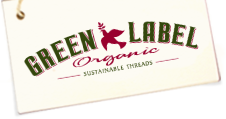- Blog
- Contact Us
FREE SHIPPING on orders over $50
Why Organic
Like so many of you, I, too, believed that cotton clothing was the “natural” choice. It was after all, suppose to be “the fabric of our lives”. I’ve come to learn otherwise.
With the knowledge that most conventional fruits and vegetables are heavily sprayed and chemically fertilized, many of us try to eat as organically and thus as safely as possible, both to the benefit of our own health and the health of the planet. I never really gave cotton a second thought until I began to read about the horrors of conventional cotton farming. What I learned absolutely astounded me. What you are about to read will, I believe, astound you as well.
The top three most pesticide-laden crops in the world are:- Coffee
- Cotton
- Tobacco
Each year cotton producers around the world use nearly $2.6 billion worth of pesticides and insecticides, which accounts for more than 35% of the world's annual pesticide and insecticide use. In California’s San Joaquin valley alone, more than 18 million pounds of pesticides are sprayed annually onto one million acres of cotton.
It takes approximately 1/3 of a pound of pesticides, herbicides, and defoliants to grow enough cotton to make just one conventional cotton T-shirt.
Of the nine chemicals used in growing cotton, five of them are known carcinogens (cancer-causing chemicals). Every one of them is classified category I or II by the EPA. Categories I and II are considered the most dangerous chemicals.
In the US some of these pesticide treatments are done with aerial spraying. It is estimated that less than 25% of the pesticides actually land on the cotton crop. The remainder drifts as far as a few miles and may land on other crops, farm workers and homes. In many other countries the danger of pesticide treatments is increased as it is often done either by hand or with improper and outdated equipment. Oftentimes the farmers are unable to read instructions or warning labels. Many never receive proper directions for the use of these highly toxic chemicals, causing overexposure for the farmers and their communities.
There are three main parts of a cotton plant that are used in manufacturing:- Cottonseed: which accounts for about 60% of the yield from each harvest. The cottonseed retains the heaviest concentrations of pesticide residue. This same cottonseed is used to make cottonseed oil; the oil used in most snack products (cookies, cakes, chips, and other processed foods). Cottonseed is also sold to dairies and cattle ranches because it enriches the butterfat in dairy and marbleizes the beef.
- Long fiber cotton: which is used in the manufacturing of fabric for clothing, bedding, towels, etc.
- Gin trash: which is comprised of short fiber cotton, leaves and stems. Gin trash is fed to livestock (except in California where it has become illegal because of the high levels of pesticide residue). It is also used to make mattresses, cotton swabs, cotton balls and tampons. The average woman in America will use 11,000 tampons in her lifetime!!
Even after the cotton has been harvested, the toxic chemical chain is not broken. This same heavily pesticide-laden cotton is then continually handled and processed by workers as it moves through the process of going from fiber to cloth.
